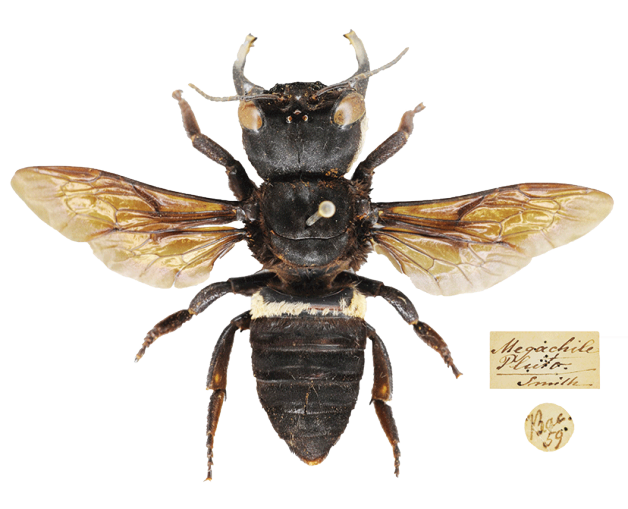A mammoth of a bee
The past few months, there have been abundant rumblings in the entomological research community about the state of insect conservation and risks of species extinctions (notice the not-at-all subtle foreshadowing of a future blog post). The research on insect populations is patchy and full of holes, but there are some charismatic species (such as the nine-spotted lady beetle, monarch butterfly, Dakota skipper, Poweshiek skipperling, and rusty-patched bumble bee in our area) that have experienced demonstrable population declines in past years. But the insect conservation story is not all doom and gloom! The world’s largest bee, a species known as Wallace’s giant bee (Megachile pluto), had not been seen since 1983 and was therefore presumed extinct. However, a team has recently rediscovered it in Indonesia. The bee is likely to be naturally rare in its restricted range, but it is potentially threatened by habitat loss and unscrupulous collecting as well. Read more about this exciting discovery, and check out beautiful photos and videos of this massive bee, in this article by National Geographic.
While this giant, charismatic bee hails from exotic lands, some of our local bees need some extra attention too. If you are curious to know more about the bees around you, please check out our blog posts from National Honey Bee Day 2018 and our string of posts from Pollinator Week 2018 (I, II, III, IV, and V).






